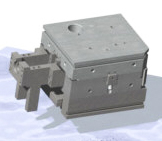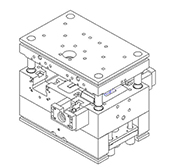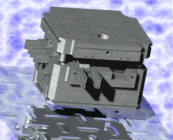Mold Design
R&S has over twenty years of experience in Mold Design. Die casting molds are most commonly designed for parts in Aluminum, Magnesium, Zinc, or can be created using another special die alloy. Molds for cold chamber, hot chamber, miniature, and special processes will be built to your exact specifications. Our engineers focus both on part and die optimization, improving part quality and reducing material usage, minimizing production costs and cycle times.
An experienced mold designer knows that there are many factors and specifications that must be studied when working on a mold project, such as:
- Die draft– the degree to which a mold core can be tapered which affects how smoothly the casting will eject from the die
- Wall thickness– select appropriate alloy/material strength to ensure the correct wall thickness required for certain applications and improve stability
- Holes and windows– make sure these are used appropriately to aid in ease of ejecting a completed molding and avoid overflow to prevent unwanted casting within the holes
- Fillets– concave areas on a mold used to produce smoother corners aiming to reduce production errors and stress fractures
- Parting lines– make sure the different sections of the mold are connected properly to avoid or reduce material seepage or excessive seeming
- Ribs– improves material strength in products lacking the wall thickness for certain applications, and can reduce stress cracks, non-uniform thickness, can decrease product weight and improve fill capabilities.
R&S Design has built a reputation for excellent mold designs, from simple open shut molds to complex multiple slide molds.



For more information, or to find out how R & S Design can help you with your next Mold Design project, please contact us.
